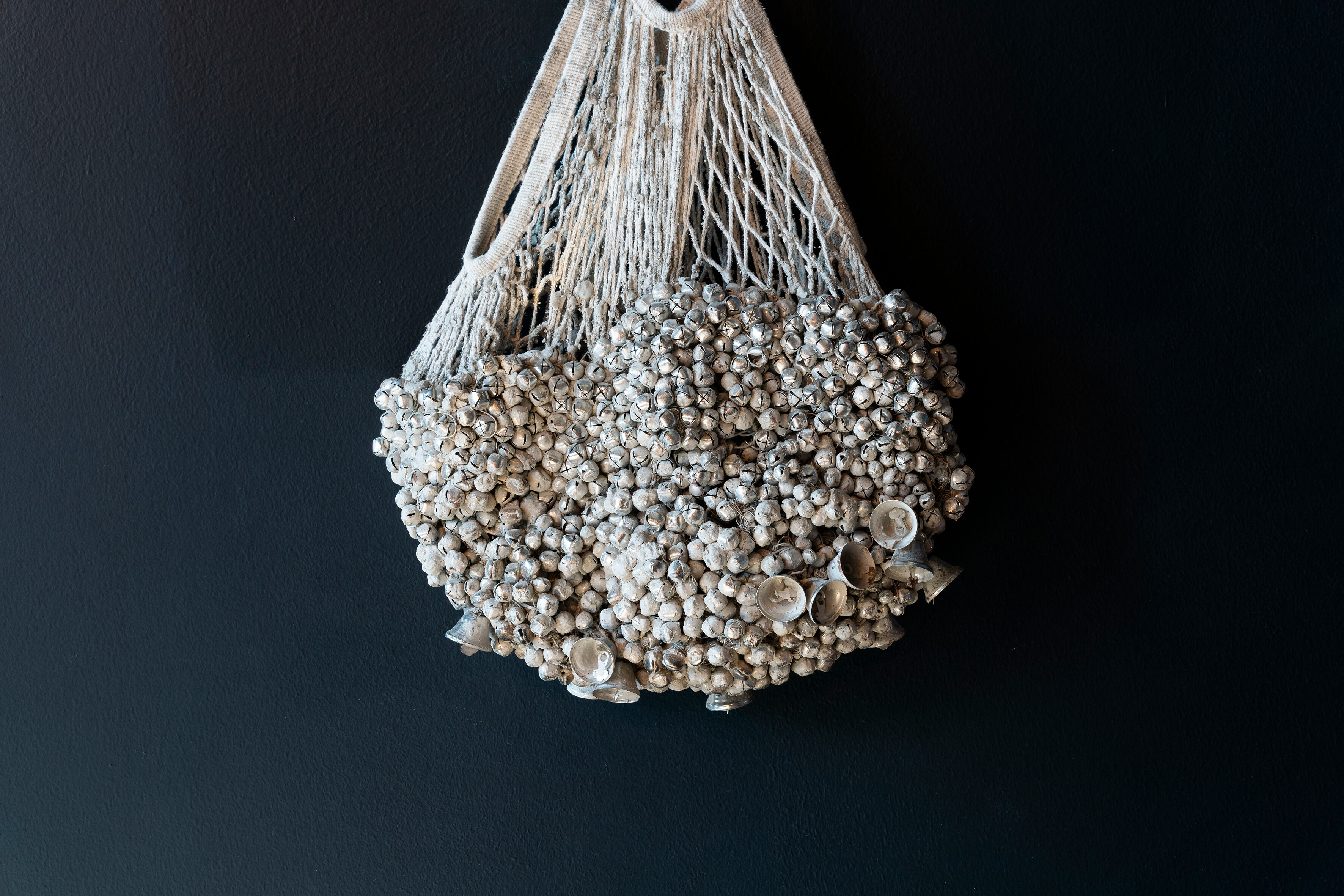
Etti Abergel - 2019
Bell Basket, פעמונים ס
For Etti Abergel, a Jerusalem-based installation artist, each exhibition is a chapter in a lifelong autobiography. Like Marcel in Proust’s In Search of Lost Time, Abergel sifts through images in her past and picks out significance memories which she wants to reexamine. As a visual artist, she latches on to objects that symbolize these memories, building a visual language that binds and combines these symbols in a physical space. “I try to give body to abstract memory, to recreate the internal experience,” says Abergel, who represented Israel in the 2003 Venice Biennale. “To restore the essence of the moment of feeling.” This “moment of feeling” can be considered a traumatic moment, but it can also be understood as the source of creativity. “Like a present and a punishment at the same time,” she says.
Abergel was born in Kiryat Tivon, where she grew up in the Geffen neighborhood. “As a child from a Mizrahi family, it was an archetypically large family that included the whole neighborhood.” She describes the population as being made up mostly of Jews from North Africa and Holocaust survivors, “proletarians, workers with integrity – very Zionist, though socialist in essence.” (…) Abergel explains that she never rebelled against her family, but that she always needed her creative freedom and independence. After her army service, she immediately enrolled at the Bezalel Academy of Art and Design.
For her, the stage provided her by an installation is a temporary home, a situation to which she can bring her recent contemplations, thoughts, ideas. “It’s a stage in the existential sense,” she clarifies, “and also the stage between past and future.” She’s interested in the unknown visual presence of trauma. “I’m an artist, so plasticity is the basis of my language.” (…) She works in real time – she calls it “a dangerous medium” – and aims for a transformation that’s based in strict method but also has the improvisation of jazz music. “At the Venice Biennale, I had 21 working days in the space. I lived there, adapted myself to it, tried to build a place. I work until someone comes in and tells me the moment has come for the viewers to come in.” Abergel’sobjects, like her thinking, are simultaneously concrete and metaphysical. She’s preoccupied with the abstraction of an idea or memory, but she’s equally engaged by the object that symbolizes this memory
Abergel continues to mix her two heritages – that of the Mizrahi background and of Western art – using the structure of the history of art to install her own autobiographical story. She says that from her neighborhood, she was the only one who thought about art more than survival skills, and she doesn’t feel that her mission is to find her place within the mainstream. Rather, she prefers to maintain her place on the border between acceptance and otherness.



